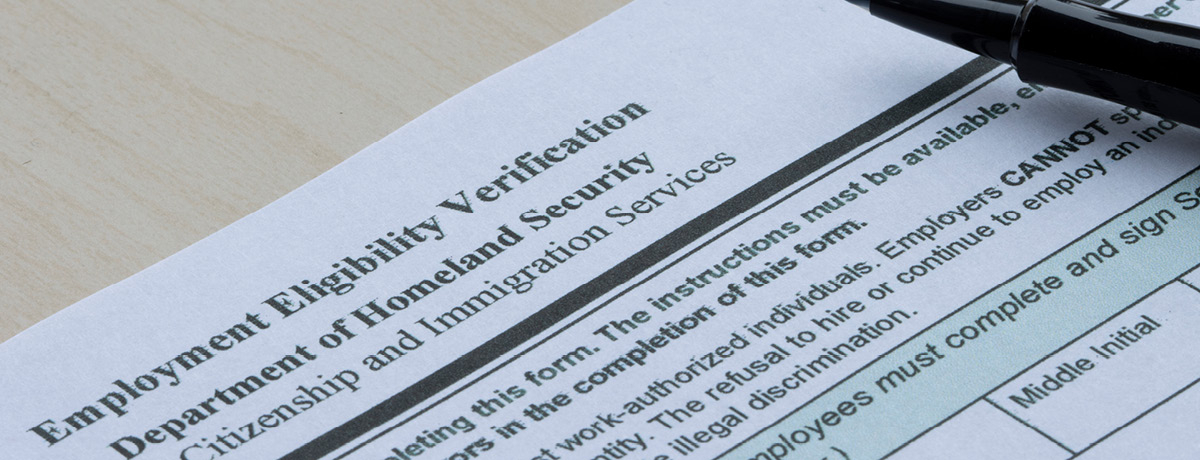Form I-9 is used to verify the identity and employment authorization for all individuals hired for employment in the United States. All U.S. employers are required to complete and retain Form I-9, Employment Eligibility Verification, for every person they hire for employment after November 6, 1986, in the U.S. as long as that individual works for pay or other type of payment.
On Form I-9, the employee must attest to their employment authorization, as well as present the employer with acceptable documents as evidence of both identity and employment authorization. The employer is then required to examine those documents to determine whether they reasonably appear genuine and relate to the employee and then record the document information on the employee’s Form I-9. The employee must complete Section 1 on his or her first day of work, and the employer must complete and sign Section 2 within three (3) business days of the employee’s date of hire (hire date means the first day of work for pay).
Since the introduction of this process in the 1980s, in-person, physical verification has been required. However, as of August 1, 2023, U.S. Citizenship and Immigration Services (USCIS) announced a new version of Form I-9 for qualified employers. Most notably, the new Form I-9 provides for a new virtual verification process. To be considered a qualified employer, the employer must be enrolled and maintain “good standing” in E-Verify. Employers must also complete fraud and anti-discrimination training, be enrolled in E-Verify at all hiring locations where the virtual process is used and use the virtual process consistently and in a non-discriminatory manner at each hiring site.
The following are the most notable changes to the new Form I-9:
- Reduces Sections 1 and 2 to one page;
- Includes a checkbox that allows employers enrolled in E-Verify to indicate that they have examined the employee’s identity and employment authorization documents remotely (if applicable);
- Supplement A replaces the preparer/translator certification;
- Supplement B replaces the re-verification section;
- Change in terminology from “alien” to “noncitizen”;
- List of acceptable documents page has been revised to include acceptable receipts in addition to physical documents; and
- Reduces the number of pages of instructions from 15 pages to 8 pages.
In order to properly participate in the remote examination of Form I-9 documents, employers must take the following steps:
- Employer must be enrolled in E-Verify.
- The new hire provides soft copies of documents (front and back if the document is two-sided).
- Employer examines the documents to determine if they reasonably appear to be genuine.
- Employer remotely examines employee’s I-9 documents via live video, during which the new hire must present the same documents so that the employer can ensure the documentation reasonably appears to be genuine and relates to the individual.
- Employer selects the Form I-9 to use and annotate:
- If using the Form I-9 dated 08/01/23, check the box in the Additional Information field.
- If you use the Form I-9 dated 10/21/2019, write “Alternative Procedure” in the Additional Information field.
- Beginning November 1, 2023, only use the Form I-9 dated 08/01/23.
- Employer retains all document copies (front and back) that are examined remotely with the employee’s Form I-9.
- Employer creates a case in E-Verify.
The revised Form I-9 is available on the USCIS website (www.uscis.gov). Employers may continue using the previous edition of the Form I-9 dated 10/21/19 until October 31, 2023. Employers with questions concerning the new Form I-9 should contact their immigration attorney.

Nia Doaks is an attorney at national labor and employment law firm Constangy, Brooks, Smith & Prophete, LLP. Nia has experience counseling businesses on a variety of labor and employment law matters under federal and state law and representing clients in litigation and proceedings before the Equal Employment Opportunity Commission. She may be contacted at ndoaks@constangy.com.
































